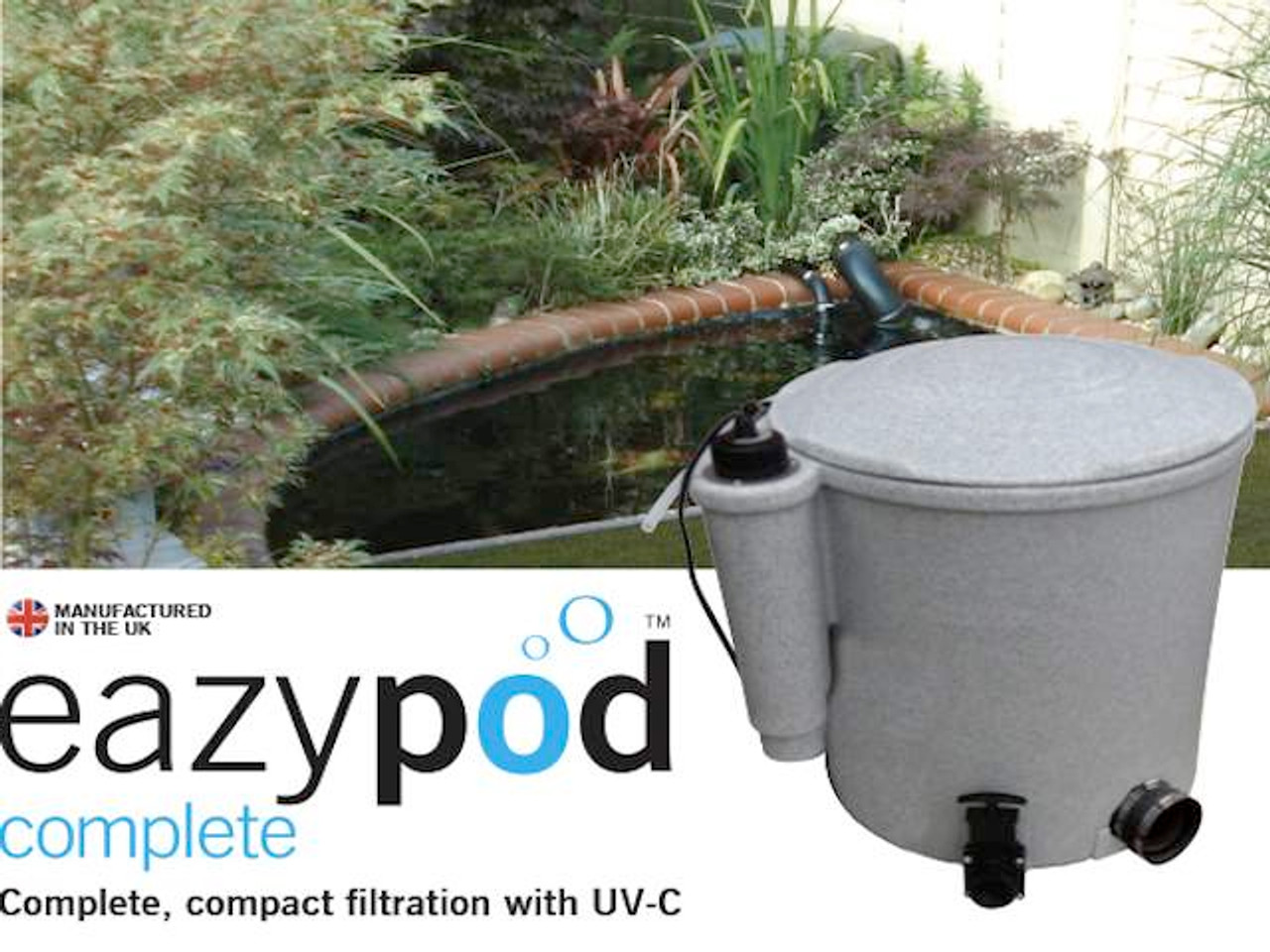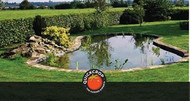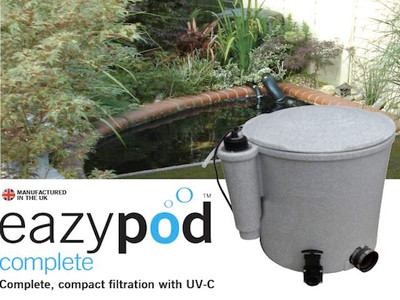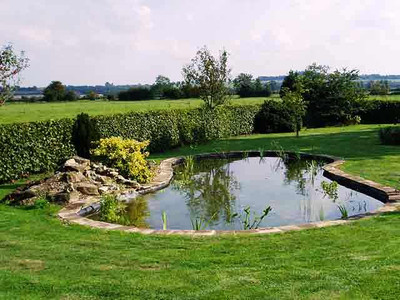Maintaining a Garden Pond

Maintaining a garden pond fosters a healthy ecosystem, providing the suitable environment for fish and plants to thrive. It's important to practice regular maintenance routines, which can involve inspecting and repairing the structure of the pond or simply cleaning the water and clearing away any dead foliage.
Checks and maintenance of the pond will depend on the season and weather conditions, taking into account the growth patterns and particular needs of any planting. With regular maintenance checks and periodic overhauls, a garden pond can provide a beautiful garden feature or a suburban wildlife sanctuary for many years. By nurturing a balanced environment you can create a natural fusion of water, flora and pondlife.

EasyPond 30000 Sunken Garden Pond Kit - 9m x 7m
View Product Year-Round Pond Care Tasks
A weekly maintenance routine will involve checking the pond for external damage and looking out for rips and tears in the liner. Any splits should be patched with a pond repair kit. Inspect the structure for cracks or signs of rot, and remedy any problems immediately.
- If you have a sunken pond, check the stability of the bank and remove any sharp rocks and stones. Monitor the quality of the water with a home testing kit. A build up of ammonia and chlorine may harm the fish in excessive amounts.
- Your pump should be tested and filters cleaned to ensure the water is being oxygenated, removing any clogs and blockages.
- Skim the surface to remove leaves or other deposits which will prevent light and oxygen penetrating the water. Trim marginal plants and remove any dead leaves or flowers. Divide and replant any overgrown plants and cut back anything that appears to be casting too much shade. Inspect the submerged plants and remove any that are dead, dying or beginning to rot.
- Check for algae or disease and clean or treat the affected areas.
- Fertilize any plants in pots at regular intervals. Water lillies for example will benefit from a monthly fertilising.
- In harsher winter conditions be sure to create a hole in any ice that forms in order to provide an oxygen source for fish, many pond owners have a float or ball laying on the surface to prevent a total ice-sheet forming.

Aerating a Garden Pond
Aerating your pond is important for a number of reasons.
- It increases oxygen levels in the pond, which is vital for aquatic plants, fish and other inhabitants
- It promotes healthy water circulation, with even temperatures and oxygen levels throughout the pond
- It prevents the accumulation of sediment, muck and debris, ensuring good water clarity. In other words it ensures that your pond remains an attractive garden feature throughout the year.
- Aeration can prevent the growth of excess algae and weeds.
But what exactly is aeration? You may be familiar with lawn aeration already, but what pond aeration involves is adding or increasing oxygen levels in the body of water. Methods of pond aeration include air pumps and diffusers or more natural additions like water fountains and mini-waterfall setups.

Triple Action 3000 Pond Pump
View ProductThis can be more necessary at certain times of the year than others. For example during the summer months water temperatures can rise, which in turn can cause a decrease in oxygen levels. This can be exacerbated if the pond is overpopulated or if there is a lack of shading plants.
If a garden pond becomes stagnant, there can be an imbalance in oxygen levels with lower levels towards the bottom. Oxygen levels can also drop in winter if ice forms on the surface of the water.

Another key aspect of pond aeration is that it agitates the water. This prevents the water from settling or stagnating (whether overall or in certain areas), as well as discouraging the buildup of debris and sediment.
Aerating a pond is not completely essential, particularly if you have a smaller pond. But it will ensure a healthier body of water where aquatic life can happily thrive.

Adding Oxygenating Plants
Another way of increasing oxygen levels is by adding oxygenating plants. These are also referred to as submerged plants, as their foliage tends to be just under the surface. Examples include spiked milfoil, hornwort and water violet.
As well as adding colour, these plants will provide shelter for your aquatic pond life as well as discouraging the spread of duckweed. Too much of a good thing can have drawbacks though, so make sure that oxygenating plants don’t take up more than a third of your pond’s surface area.

Crop & Pond Netting
View Product Replenishing Water Levels
The water level of your pond can drop in the summer or during windy weather as it evaporates from the surface. The best way to replenish a garden pond is with rainwater, so this is where some form of rainwater catchment or container is your friend.
If you must use tap water, be aware that it will often contain levels of nitrates or chlorine that are unsuitable for a garden pond and can potentially upset the balance of your pond ecosystem. You can mitigate this by boiling the water and leaving it overnight; allowing chemicals to evaporate. Another reason why rainwater is preferred is that it will help prevent the build-up of algae.
Add water in small amounts or trickle from the bottom of the pond to avoid drastically upsetting the salt and mineral balance.

Evolution Aqua Eazy Pod Complete
View Product
Draining and Overhauling a Garden Pond
If silt deposits at the bottom of the pond are more than 25mm it is best to drain the pond and clean it out. Ponds should be drained and cleaned periodically as part of a more substantial overhaul; normally this would be every five years for smaller ponds and ten years for the larger types.
This is a good opportunity to rethink and rearrange any planting you have around the pond and maybe consider adding oxygenating aquatic plants to improve water quality.

If you are draining and cleaning the pond retain some of the silt and replace it back in the pond when you refill. This sludge contains beneficial organisms which will help re-establish your aquatic eco-system. The remaining silt can be spread on your garden borders or added to your compost.
If you are removing plants or foliage from the pond, leave them at the water's edge for a while so that any aquatic residents who may have been sheltering there can make their way back to the pond. Transfer fish to a temporary container using some netting.



